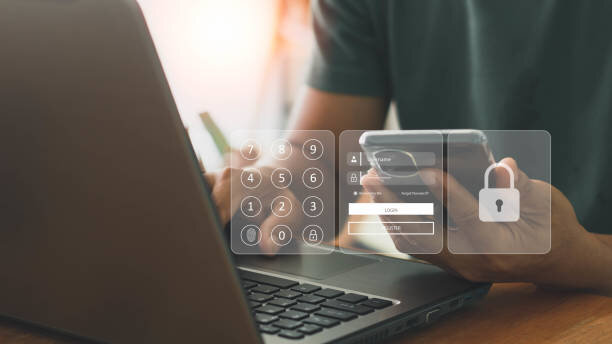In today’s digital world, businesses face a growing number of cyber threats, and not all of them come from the outside. Insider threats—whether intentional or accidental—pose a serious risk to companies of all sizes. Employees, contractors, or anyone with internal access can compromise sensitive data, leading to breaches, financial loss, and reputational damage. Many organizations focus heavily on external cyberattacks but underestimate the dangers within. A single mistake, like an employee clicking a phishing link, or a disgruntled worker stealing intellectual property, can have devastating consequences. As companies become more interconnected, the risk only increases.
To protect your business from insider threats, it’s essential to implement proactive security measures. This includes monitoring user activity, enforcing strict access controls, and educating employees on cybersecurity best practices. Regular audits, strong data encryption, and behavioral analytics can also help detect and prevent suspicious activity before it escalates.
Understanding Insider Threats
Insider threats can be categorized into two primary types: malicious insiders and inadvertent insiders. A malicious insider is someone who intentionally exploits their access to company systems, data, or infrastructure for personal gain or to harm the organization. This could include stealing confidential information, damaging data, or sabotaging critical systems. On the other hand, inadvertent insiders are employees or contractors who, often unknowingly, cause harm through negligent actions like falling for phishing scams or sharing sensitive information inappropriately.
Both types of threats can have serious consequences for businesses, which makes it critical to recognize and mitigate these risks before they cause significant damage.
Assessing Your Risk: Identify Vulnerabilities
Before you can effectively protect your business from insider threats, it’s essential to assess your current level of risk. The first step is to evaluate your organization’s internal structure, systems, and the types of data that need to be protected. This includes understanding:
- Employee Access Levels: Ensure employees only have access to the systems and information necessary for their role.
- Data Sensitivity: Identify which data is most sensitive and needs stricter security measures.
- Security Practices: Review the security measures in place to determine if they adequately protect against both internal and external threats.
Conducting a thorough risk assessment will help you understand where vulnerabilities may exist and where you need to implement stronger safeguards.
Implementing Robust Access Control
One of the best ways to reduce the likelihood of an insider threat is to control who has access to what data. Implementing a role-based access control (RBAC) system is a highly effective way to limit access to sensitive information. RBAC ensures that employees can only access the data and systems that are essential for their work, minimizing the chance of unauthorized access.
Additionally, it’s critical to regularly review and update access permissions. Employees may change roles, leave the organization, or even have their responsibilities adjusted. Regularly auditing access control systems ensures that only those who need access to certain data and systems have it.
Moreover, ensuring that employees follow the principle of least privilege—giving them only the minimum level of access required for their tasks—will further reduce the risk of insider threats.
Monitoring Employee Activity
Monitoring employee activity can help detect abnormal behavior that could indicate potential insider threats. While it’s important to respect privacy, activity monitoring can be a key element in identifying suspicious behavior. This includes tracking actions like downloading excessive amounts of data, accessing systems outside of regular working hours, or transferring sensitive information to unauthorized locations.
There are several tools available that can help with activity monitoring, such as data loss prevention (DLP) systems, which help track and control the movement of sensitive data across networks. Regular monitoring ensures that suspicious behavior is detected quickly, allowing organizations to intervene before it escalates.
Training and Awareness Programs
Education is one of the most effective ways to prevent insider threats, especially those caused by inadvertent actions. Training employees on cybersecurity best practices, recognizing phishing attempts, and understanding the importance of safeguarding company data can significantly reduce the chances of negligent behavior. Regular cybersecurity training sessions should be mandatory, and refresher courses should be conducted periodically to keep employees aware of emerging threats.
It’s also essential to build a culture of security within the organization. When employees understand the importance of cybersecurity, they are more likely to take the necessary precautions to protect sensitive data.
Enforcing Strong Authentication Methods
Strong authentication methods are critical to ensuring that only authorized personnel can access systems and data. Passwords alone are often not enough to protect against sophisticated cyber-attacks, which is why businesses should implement multi-factor authentication (MFA) for all critical systems and applications. MFA requires users to provide two or more forms of verification, such as a password and a fingerprint or an SMS code, adding an extra layer of security.
Ensuring that employees use strong, unique passwords and enforcing regular password changes can also help mitigate the risk of unauthorized access. Weak passwords, which are often reused across multiple platforms, are a prime target for cybercriminals and can provide a gateway for insider threats to exploit.
Encouraging Employee Reporting
Employees who witness suspicious behavior should feel empowered to report it without fear of retaliation. Establishing an anonymous reporting system where employees can safely report concerns is an effective way to identify insider threats early. Often, employees are the first to notice abnormal behavior, such as a colleague accessing systems they shouldn’t or exhibiting unusual work patterns.
Encourage a transparent and supportive environment, where reporting suspicious activity is viewed as a positive contribution to the company’s security. The sooner potential threats are identified, the quicker corrective actions can be taken.
Conducting Regular Audits
Conducting regular security audits is an essential part of identifying and addressing insider threats. Audits should include a comprehensive review of security policies, procedures, access control systems, and employee behavior. They can help uncover weak spots in your organization’s defenses, whether that’s poor password practices, gaps in employee training, or outdated software.
In addition to internal audits, consider utilizing external auditors to gain a fresh perspective on your security posture. An external audit can provide unbiased insights into potential vulnerabilities that may have been overlooked.
Building an Insider Threat Response Plan
Despite all the preventive measures, no organization is immune to insider threats. That’s why it’s essential to have a well-defined insider threat response plan in place. This plan should outline the steps to be taken if an insider threat is detected, including:
- Immediate Actions: What steps should be taken to limit damage and prevent further access to sensitive data?
- Investigation: How will the incident be investigated and documented?
- Communication: Who needs to be informed, and how will the organization communicate internally and externally about the incident?
- Post-Incident Actions: What steps will be taken to recover from the incident and prevent future occurrences?
Having a clear response plan in place can help minimize the impact of an insider threat and ensure that your organization is able to recover quickly and efficiently.
Keeping Up with Cybersecurity Trends USA 2025
The landscape of cybersecurity is constantly evolving, and staying ahead of emerging threats is critical for any business. As cybersecurity trends USA 2025 indicate, organizations will face more sophisticated and targeted insider threats as technology continues to advance. Businesses need to remain agile and adaptable, continuously updating their security practices and tools to stay one step ahead of potential attackers.
This includes leveraging artificial intelligence (AI) and machine learning (ML) technologies to detect unusual activity and automate the response process. With the continued evolution of technology, staying informed about cybersecurity developments will help organizations fortify their defenses against evolving insider threats.
Conclusion
Protecting your business from insider threats requires a multifaceted approach. By implementing strong access control, monitoring employee activity, providing regular training, enforcing strong authentication methods, and encouraging a culture of security, you can significantly reduce the risk of insider threats. Additionally, conducting regular audits and having a clear response plan in place will help ensure your business is prepared to handle any situation that arises. The importance of staying proactive cannot be overstated, and by taking these steps, you can safeguard your organization from the damaging effects of insider threats.

